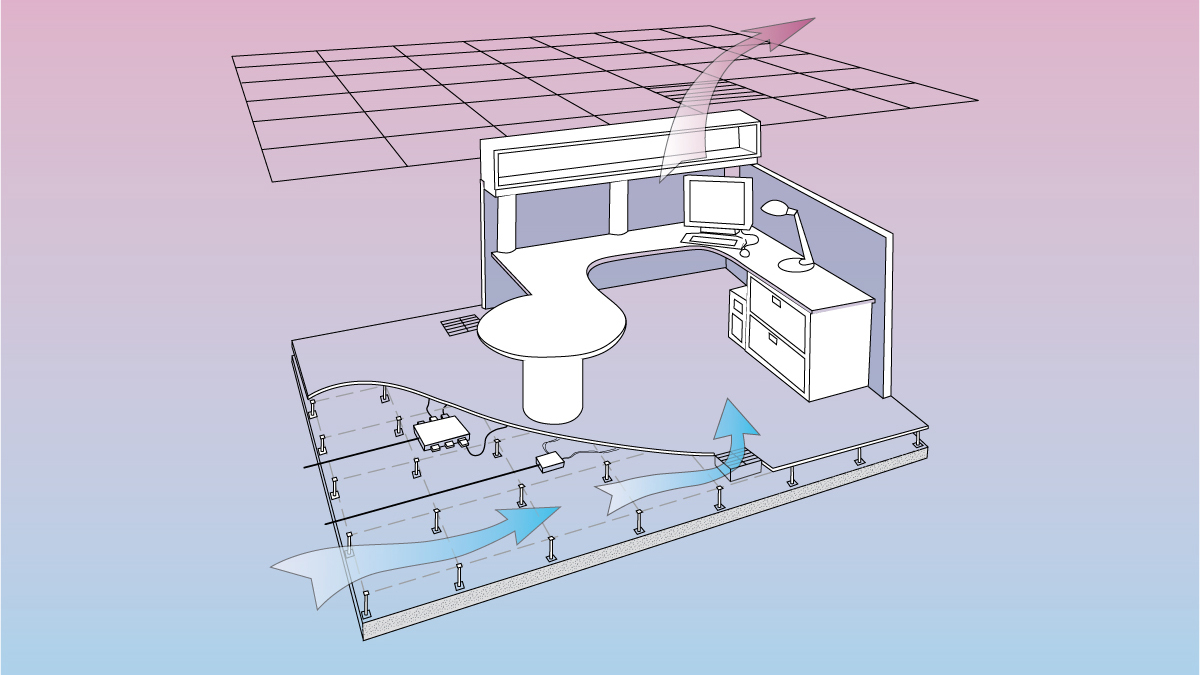Using the Advanced Thermal Comfort Model to study comfort implications of emerging green building technologies.
Status: Completed
Project Objective
Utilize the Advanced Thermal Comfort Model to assess the impacts on thermal comfort resulting from stratified environments common with today’s advanced HVAC systems.
Significance to Industry
Some HVAC systems–including UFAD, displacement ventilation and some radiant systems–achieve energy savings by conditioning the air in the occupied zone and allowing air higher up in the room to be warmer. Traditional methods of evaluating thermal comfort are not capable of considering such stratified thermal environments. CBE research has shown that UFAD systems can create conditions where the air at head level is as much as 4°C warmer than the air at the foot level. Although the ASHRAE thermal comfort standard has prescribed limits to vertical asymmetry, it does not provide any means of comparing comfort between uniform and stratified conditions.
CBE’s Advanced Thermal Comfort Model is capable of evaluating comfort perception under asymmetric and transient thermal environments. This model provides not only local sensation and local comfort for 19 body segments, but it also integrates the local sensations to obtain the whole-body thermal sensation and overall thermal comfort.
Research Approach
Based on measured stratification profiles from UFAD, displacement ventilation, and radiant HVAC systems, we have used the CBE Advanced Thermal Comfort Model to predict thermal comfort over a range of stratified conditions. We created an interface in our model that allows users to conveniently define stratified conditions in a room. We varied the degree of temperature stratification, air velocity profiles, and overall temperature in these simulations. We also compared stratified air temperature to purely radiant cooling from below. Results indicate that occupant acceptance of stratified environments is more complex than current standards prescribe, and the amount of temperature diversity that is acceptable is highly dependant on the overall temperature. Initial findings have been distributed as Internal Reports to industry partners and submitted to technical journals.
Our future goal is to create guidelines and recommendations for maintaining thermal comfort under stratified conditions. Future phases of this project include chamber or controlled field validation studies to test stratification comfort under realistic office workplace conditions.
Publications and Reports
Zhang, H., C. Huizenga, E. Arens, and T. Yu, 2005. Modeling Thermal Comfort in Stratified Environments. Proceedings, Indoor Air 2005: 10th International Conference on Indoor Air Quality and Climate, Beijing. China, September.

